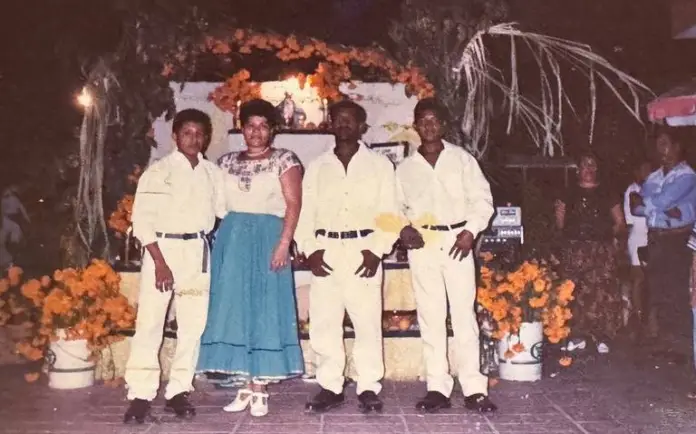In the neighborhoods of La Paz, the echo of invisible drums resounds, telling stories of struggle, tradition, and roots. The Afro-Mexican community, with just over 20,000 people in the region, has been facing the challenges of racism and social invisibility for decades, while preserving its customs and cultivating a sense of belonging that transcends generations.
Inés Paula Liévano Ávila, accompanied by her children Verónica and Alexis, recalls her family’s first steps in La Paz more than 45 years ago. “When we arrived here, they made us sing the national anthem to prove that we were Mexican. They didn’t want to let us in because we were brown, and even less those who had a darker skin tone,” she says.
This differential treatment reflects a racism that has been part of her daily experience. Even in recent times, members of the community have been rejected from jobs or personal relationships because of the color of their skin.
Despite this, the Liévano family says that in their unity and their culture they found the tranquility and strength to resist and face daily adversities.
Traditions that keep their identity alive
The Afro-Mexican community proudly preserves its customs, many of them transmitted from their roots in Oaxaca and Guerrero.
One of the most important celebrations is the Day of the Dead, where the altars are filled with tamales of various stews, including, although strange to some, iguana, armadillo and seafood, which represent the gastronomic variations and tastes of their loved ones who are no longer with us.
In addition, they also have the celebrations in honor of the Virgin of Juquila, an emblematic figure and of great respect for the community, which represents a symbol of faith and cultural resistance.
“Everything we put on the altars has a reason, it is a tribute to those who came before us,” says Inés, emphasizing the importance of preserving these traditions, such as “Las Chilenas,” a typical Oaxacan dance that is an essential part of their festivities, which strengthens the link with their roots in southern Californian lands.
A long road to justice and recognition
Despite the social and legislative advances and cultural changes in Mexico and Baja California Sur, the community still faces challenges in accessing basic services.
Liévano Ávila remembers that it was not until recently that she managed to obtain health insurance, despite having worked for several decades without having the benefit that she was required to receive by law.
“Before, employers were not required to give us insurance. Everything changed when we began to raise our voices and demand our rights,” she says, attributing this change in part to movements led by leaders who encouraged community organization.
In the neighborhoods where they live, and the list in La Paz is long, the lack of infrastructure was, and in some cases continues to be, a constant; however, through collective work, they have managed to improve public spaces, such as sports fields, and have given life to abandoned areas in order to transform their environment.
Despite the internal divisions derived from political conflicts, the Afro-Mexican community in La Paz continues to grow and strengthen.
Their fight for visibility not only seeks to eradicate racism, but also to position their traditions as a valuable heritage for all.
“We want our future generations to continue knowing and living our traditions, so that what our ancestors left us is not lost,” concludes Inés Liévano.
Her voice, along with that of her family, resonates as a call to empathy and respect for a community that, despite adversity, remains standing, showing the world that its identity is a source of wealth and pride.
Source: elsudcaliforniano






